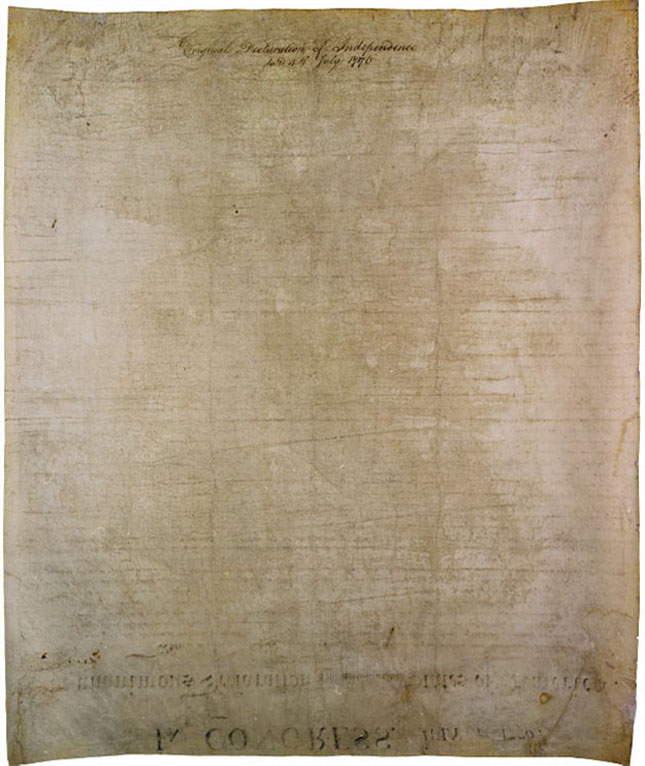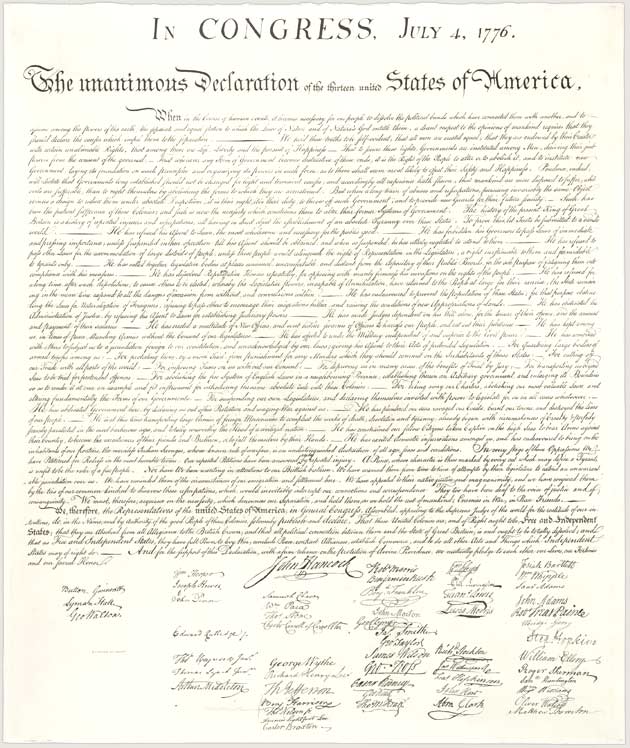
The Declaration of Independence
We hold these truths to be self-evident, that all men are created equal, that they are endowed by their Creator with certain unalienable Rights, that among these are Life, Liberty and the pursuit of Happiness.Preamble to the Declaration of Independence
The Declaration of Independence states the principles on which our government, and our identity as Americans, are based. Unlike the other founding documents, the Declaration of Independence is not legally binding, but it is powerful. Abraham Lincoln called it “a rebuke and a stumbling-block to tyranny and oppression.” It continues to inspire people around the world to fight for freedom and equality.


